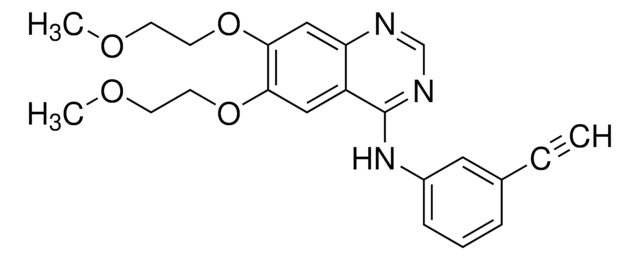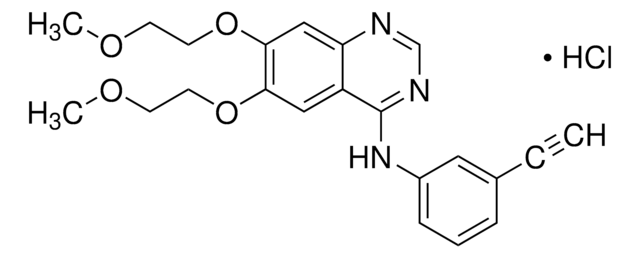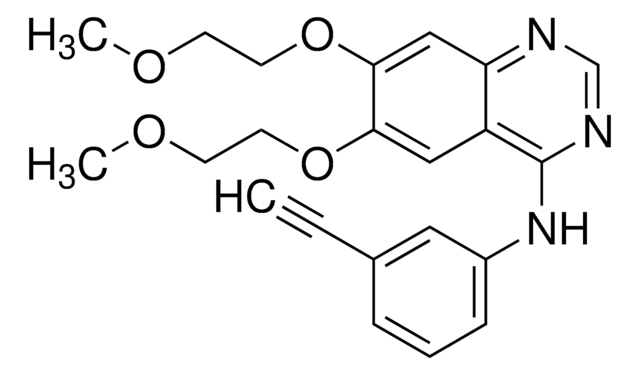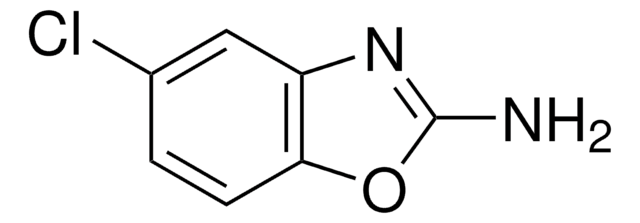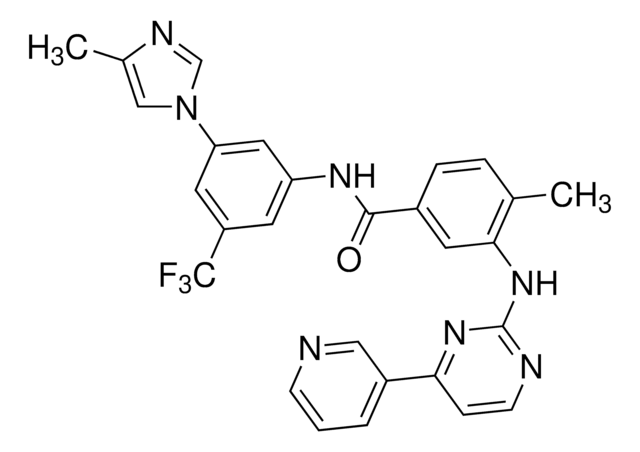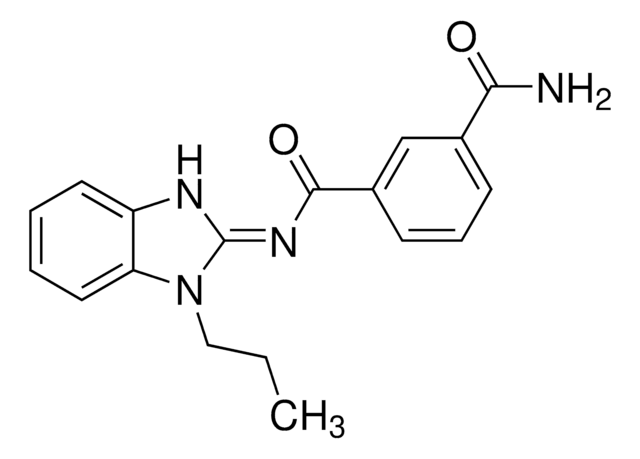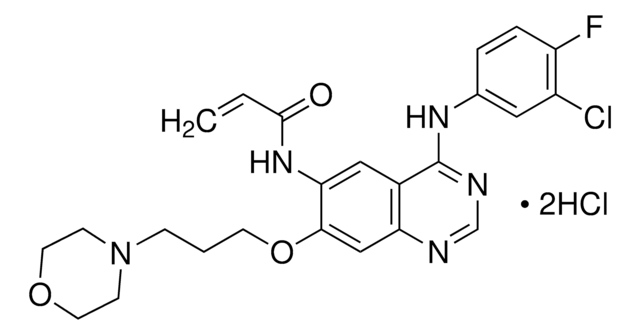SML2156
Erlotinib hydrochloride
≥98% (HPLC)
Sinónimos:
774 hydrochloride, CP-358, N-(3-ethynylphenyl)-6,7-bis(2-methoxyethoxy)-4-quinazolinamine hydrochloride, OSI-744 hydrochloride
About This Item
Productos recomendados
Ensayo
≥98% (HPLC)
Formulario
powder
condiciones de almacenamiento
desiccated
color
white to beige
solubilidad
DMSO: 2 mg/mL, clear (warmed)
temp. de almacenamiento
−20°C
cadena SMILES
Cl.N(c3cc(ccc3)C#C)c1ncnc2c1cc(c(c2)OCCOC)OCCOC
InChI
1S/C22H23N3O4.ClH/c1-4-16-6-5-7-17(12-16)25-22-18-13-20(28-10-8-26-2)21(29-11-9-27-3)14-19(18)23-15-24-22;/h1,5-7,12-15H,8-11H2,2-3H3,(H,23,24,25);1H
Clave InChI
GTTBEUCJPZQMDZ-UHFFFAOYSA-N
Descripción general
Aplicación
Acciones bioquímicas o fisiológicas
Palabra de señalización
Warning
Frases de peligro
Consejos de prudencia
Clasificaciones de peligro
Acute Tox. 4 Oral
Código de clase de almacenamiento
11 - Combustible Solids
Clase de riesgo para el agua (WGK)
WGK 3
Punto de inflamabilidad (°F)
Not applicable
Punto de inflamabilidad (°C)
Not applicable
Elija entre una de las versiones más recientes:
Certificados de análisis (COA)
It looks like we've run into a problem, but you can still download Certificates of Analysis from our Documentos section.
Si necesita más asistencia, póngase en contacto con Atención al cliente
¿Ya tiene este producto?
Encuentre la documentación para los productos que ha comprado recientemente en la Biblioteca de documentos.
Los clientes también vieron
Nuestro equipo de científicos tiene experiencia en todas las áreas de investigación: Ciencias de la vida, Ciencia de los materiales, Síntesis química, Cromatografía, Analítica y muchas otras.
Póngase en contacto con el Servicio técnico